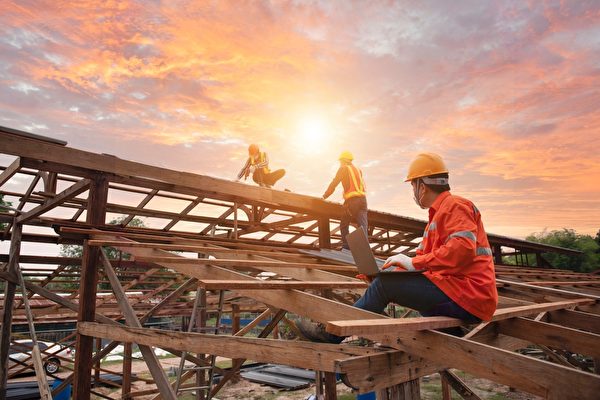The confidence of US home builders reached its highest level since July of last year in March, while new home construction saw a significant decline, exceeding expectations.
On March 18, Carl Harris, Chairman of the National Association of Home Builders (NAHB), stated in a release, “Buyer demand remains strong, and if mortgage rates continue to fall later this year, we expect more consumers to move off the sidelines and into the market.”
Both the NAHB and Wells Fargo Builder Confidence Index rose from an unrevised 48 in February to 51 in March. According to a Reuters survey, economists’ expectations for March remained unchanged at 48.
While builder confidence remains high, the decline in construction starts in March exceeded expectations. Single-family housing starts were up 21.2% compared to the same period last year, but still dropped 12.4% from February.
For multi-family units, with a surplus of apartment buildings and a slowing growth in apartment rents, construction of multi-family housing continues to decelerate. Construction for buildings with five or more units decreased by 20.7% from the previous quarter and 43.7% from the same period last year.
In March, the issuance of building permits increased to 1,458,000 (seasonally adjusted annual rate – SAAR). This figure is 4.3% lower than the revised number for February but marks a 1.5% increase from a year ago.
According to data from the US Census Bureau, new home construction in March rose to 1,321,000 units (SAAR), down 14.7% from the revised February prediction and 4.3% from the same period last year.
The slowdown in single-family housing starts indicates builders’ cautious approach. Although overall confidence in current sales remains positive, there’s a slight drop in sales expectations for the next six months. Part of the reason for the decline in single-family housing starts in March may be the large number of homes still under construction, but builders may also be beginning to worry that rates could stay elevated longer than previously anticipated.
Despite market challenges, the number of builders forced to lower prices is decreasing. According to data from the NAHB, only 22% of builders reduced prices this month, lower than the 24% from last month and 36% in December 2023. The average price reduction for new homes remains steady at 6%, with fewer builders offering sales incentives, indicating strong housing demand.
Demographic factors, along with income and wealth growth adjusted for inflation, continue to support housing demand. Meanwhile, the current inventory of existing homes for sale remains 36% lower than pre-pandemic levels, and home values have risen faster this month compared to March 2023.
Additionally, a study released by the NAHB in April titled “What Home Buyers Really Want in 2024” reveals that the majority of home buyers are seeking homes with at least one home office (space for work or study). Specifically, 66% prefer homes with just one home office, 13% want at least two, and 20% do not want any home office space.
Further detailed findings show that young and affluent buyers particularly favor home offices. For instance, 90% of Generation Z buyers desire at least one home office, while Baby Boomers have a rate of 75%. Similarly, 92% of buyers with incomes over $150,000 seek at least one office, compared to 65% of those with incomes below $50,000.
Redfin’s CEO Glenn Kelman told Forbes, “Owning a home isn’t a fashion statement, it is a fundamental human need to have a home where you can raise a family.” However, he believes the issue lies not only in recent affordability challenges but also in the connection to building more homes.
Kelman stated, “For a very long period, homes became very expensive, but money became cheaper and cheaper.” He thinks remote work has allowed people to move anywhere they want. Californians became Texans and Floridians, but now all those factors have disappeared. Those who wanted to move already have, and money is no longer cheap. The only solution to this problem is to build homes.
Essentially, Kelman highlighted, “The foundation of the American dream is that there is more land here than in Europe,” and for a considerable time, the government actively worked with builders to construct more housing.
However, over time, this situation evolved, Kelman referred to it as well-intentioned laws aimed at protecting the environment and enabling individuals to better shape their communities. This has had unintended consequences, making it increasingly challenging to build anything. Resulting in “both the left and the right working to address the affordability crisis,” he stated.

